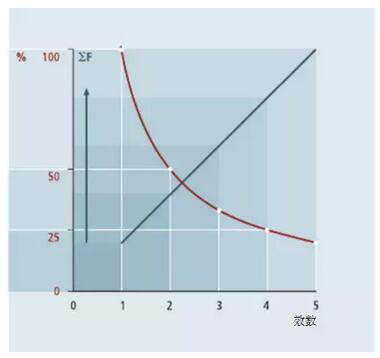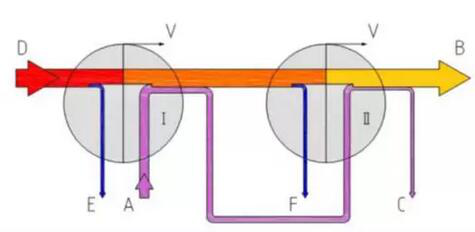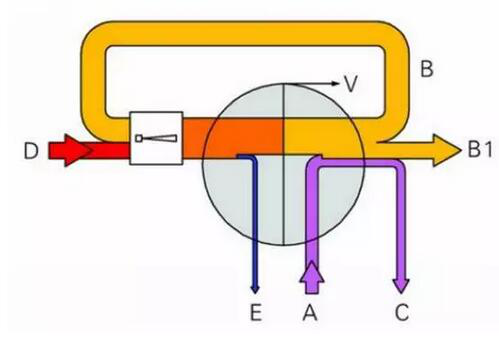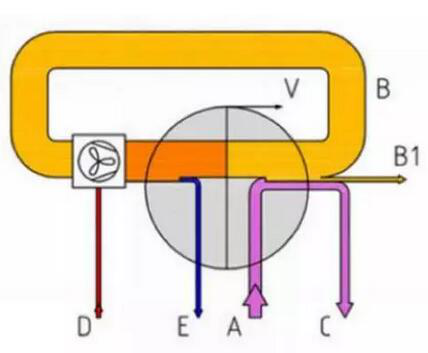MEE, TVR, MVR is still not clear about it? Still do not know what technology is most energy-efficient and distressed it? Come and learn about their principles! Look at which energy saving technology is best for you!
Evaporation is one of the commonly used operations in the chemical industry. In today's society, the energy saving of the evaporation process is particularly important.
The operating cost of evaporation device is mainly determined by the energy consumption, and the energy of the system must be balanced under stable operating conditions. Through the intelligent thermal configuration of the evaporation device, the energy consumption of the system can meet the different needs of users. Three basic technologies are usually adopted to achieve the purpose of energy saving:
Multi effect evaporation (MEE)
Thermal vapor compression (TVR)
Mechanical vapor compression (MVR)
By using the above technique, the energy saving and consumption reduction can be energy saving. In order to minimize the cost of investment and operation, two of them are often used at the same time. For very mature evaporation devices, it is possible to use all of the three techniques.
Multi effect evaporation (MEE)
In the multi effect evaporation device, the steam from the first effect of the new steam heating is not to enter the condenser, but as a second effect of the heating medium to be used again. This will reduce the new steam consumption by about 50%. Repeated use of this principle, can further reduce the consumption of new steam.

The total temperature difference is the first effect of the maximum allowable heating temperature and the final effect of the lowest boiling point difference, the difference between the effect of the distribution, so the difference between the temperature of each effect with the increase of the number of effective reduction. Thus, in order to achieve the required amount of evaporation, the heating surface area of each effect must be enlarged, but the temperature difference is relatively low. The following figure shows that with the increase of the number of the evaporation device, the total heating surface area of the total heating surface also increases linearly. Therefore, the cost of investment rose sharply, while the energy saving is getting less and less.

Steam consumption (%), the total heating area (sigma F) curve and the effect of the number of evaporation device
Direct heating heat double evaporator as follows:

A products, B residual steam, C concentrated liquid, D steam, E steam condensate, F two steam condensate, V heat loss
Thermal vapor compression technique (TVR)
When the heat steam is compressed, the steam from the boiling chamber is compressed to a higher pressure in the heating chamber, that is, the energy is added to the steam, according to the heat pump principle. As the temperature of the saturated vapor corresponding to the pressure of the heating chamber is higher, the steam can be used for heating. The steam ejector. They are based on the principle of jet pump operation, no active parts, the design is simple and effective, and can ensure the highest working reliability.
Using a thermal vapor compressor and increasing the evaporator has the same effect of steam / energy saving. A number of new steam need thermal vapor compressor operation, namely the so-called steam. The steam must be transmitted to the next effect, or to be sent to the condenser as residual steam. The residual energy contained in the residual steam is approximately equal to the energy provided by the steam power.
The heat flow diagram of the evaporator is shown below:

A product B two steam B1 residual steam C concentrated liquid D steam E steam condensing water V heat loss
Mechanical vapor compression technology (MVR)
Mechanical vapor compression, the mechanical driven by the compressor to steam the evaporator vapor compression to higher pressure. So the compressor is also used as a heat pump to work, to increase the energy of the steam. In contrast to the compression heat pump used in the circulating process fluid (i.e., the closed system, the refrigeration cycle), the steam re compressor is used as an open system to work, so it can be regarded as a special compression heat pump. After the vapor condensation and the subsequent heating of the steam condensate, the condensate leaves the circulation. Heating steam (one side) and the two steam (cold side) are separated by the heat exchange surface of the evaporator. The comparison between the open compression heat pump and the closed compression heat pump shows that the surface of the evaporator in the open system basically replaces the function of the process fluid expansion valve in the closed system. By using relatively less energy, the mechanical energy of the compressor impeller in the case of a compression heat pump, the energy is added to the process heating medium and into the continuous cycle. In this case, no steam is required as a heating medium.

A products, B two times steam, B1 residual steam, C concentrated liquid, D electric energy, E steam condensate, V heat loss
In the multi effect thermal vapor compression system, the heat of condensation is still very high. In multi effect devices, if there is n effect, condensation heat is about one time energy input 1/n. And a steam injection compressor can compress a part of the secondary steam, the steam powered energy must be as waste heat is released to the cooling water. However, the use of open compression heat pump can significantly reduce or even eliminate the heat released by the condenser. In order to achieve the final thermal equilibrium, a small amount of residual energy may be required or the residual vapor is condensed, thus allowing a constant pressure ratio and stable operating conditions.
Reasons for mechanical vapor compression
■Low energy consumption per unit
■Because the temperature difference between the product of low evaporation
■As a result of the common single effect to make the product stay time is short
■The process is simple and practical.
■Partial load operating characteristic is excellent
■Low operating cost